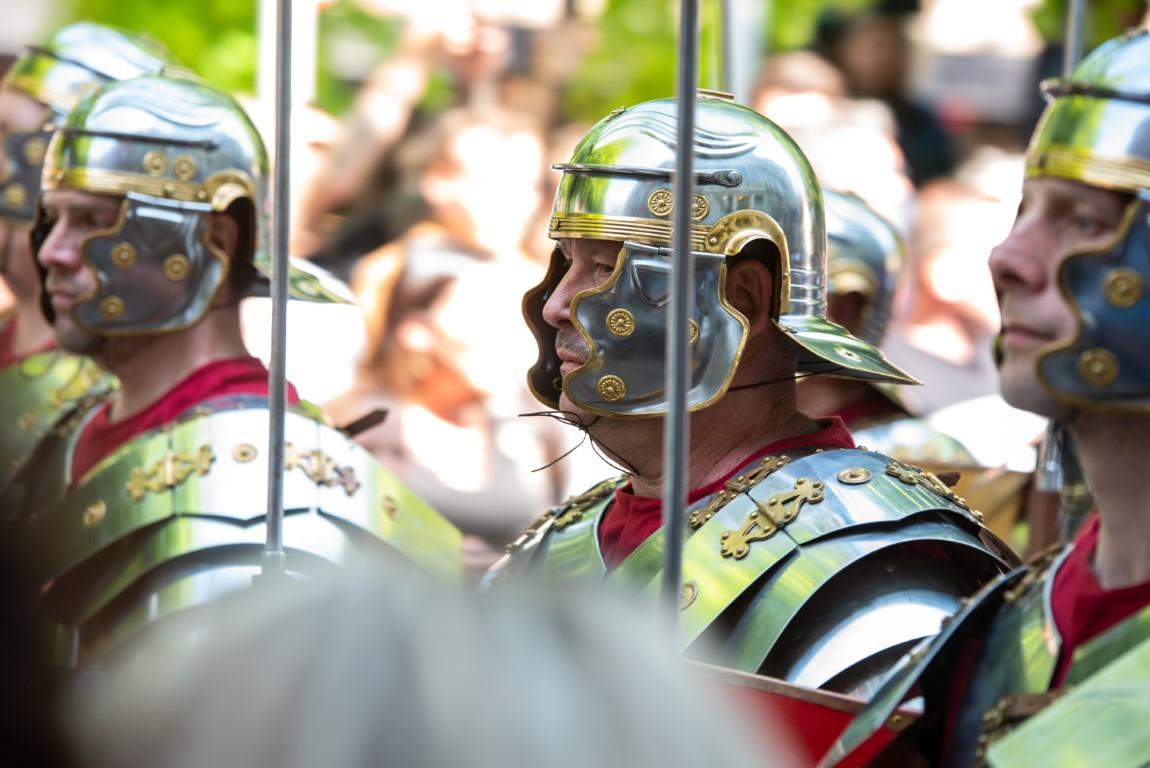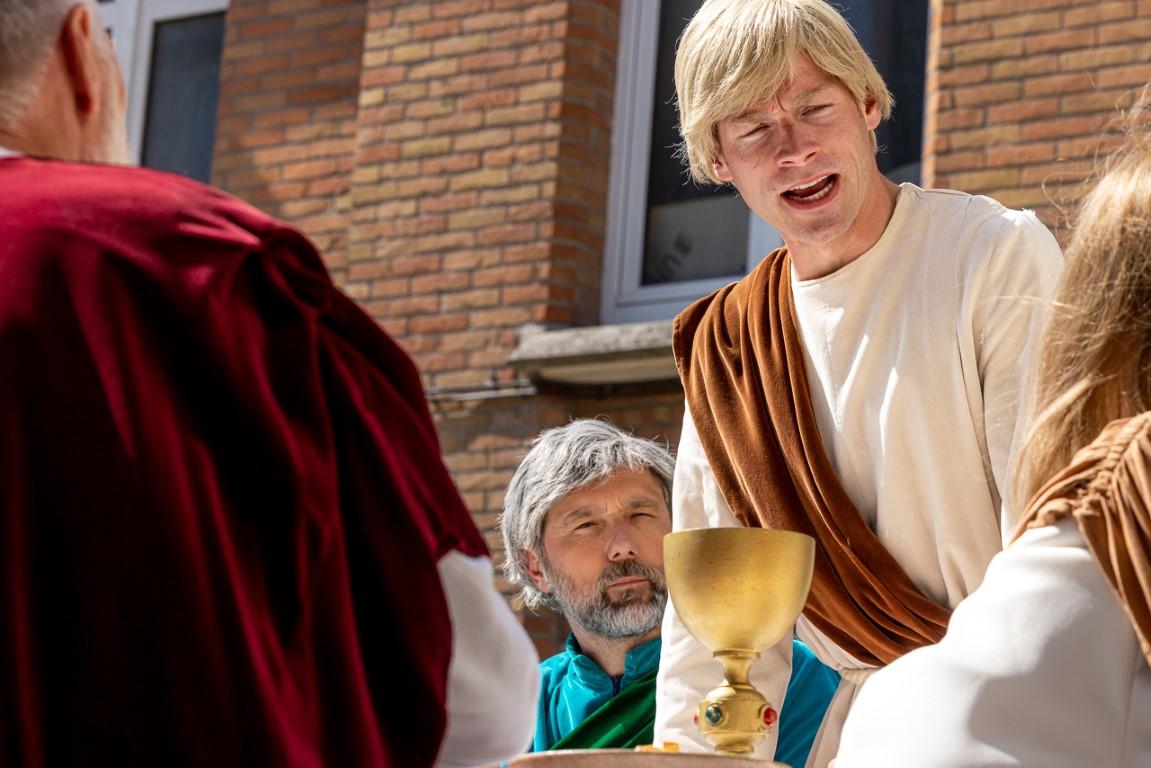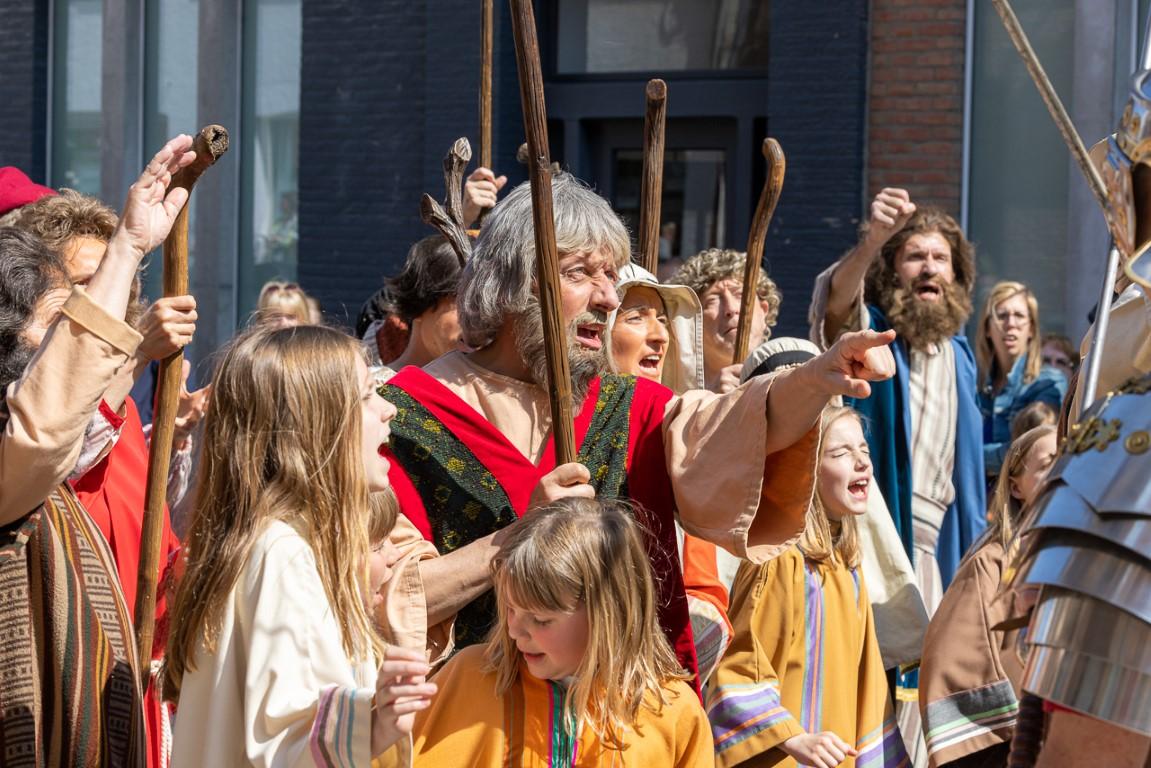
Last Supper
The scene is presented by the rhetoricians of the Holy Ghost or the Thirteen, because their chamber was founded on Maundy Thursday. For the same reason, they consisted of thirteen members, referring to Jesus and the twelve Apostles.
Jesus passes on his message to the Apostles. They learn to see in the meal the symbol of the loving togetherness that Jesus has always practised and through which He wanted to bring God to humanity. But this night is also the moment of betrayal: someone from His inner circle betrays Him.

Jesus is interrogated by Pilate
During the Middle Ages, the clerks of the tribunal, called the ‘Vierschaar’, noted the judgements of the aldermen. The clerks therefore present this scene.
Jesus didn’t get a fair trial. The Roman governor Pilate doesn’t search for the truth but fights for his own position.
Jesus is crucified in order to appease the anger of the people and to remove the tensions in society.

Whipping and ridicule
From the 15th century on, the bricklayers and stonemasons had their worships in the chapel of the Holy Blood. They introduce this scene.
A platoon of Roman soldiers surrounds the statue of the ‘Ecce homo’ or ‘Christ on the cold stone’, by sculptor Michiel D’Hondt, which dates from 1900 and is venerated in the Basilica of the Holy Blood. From now on begins the description of Jesus’ physical and moral suffering. He is the symbol of all tortured people to this very day.



